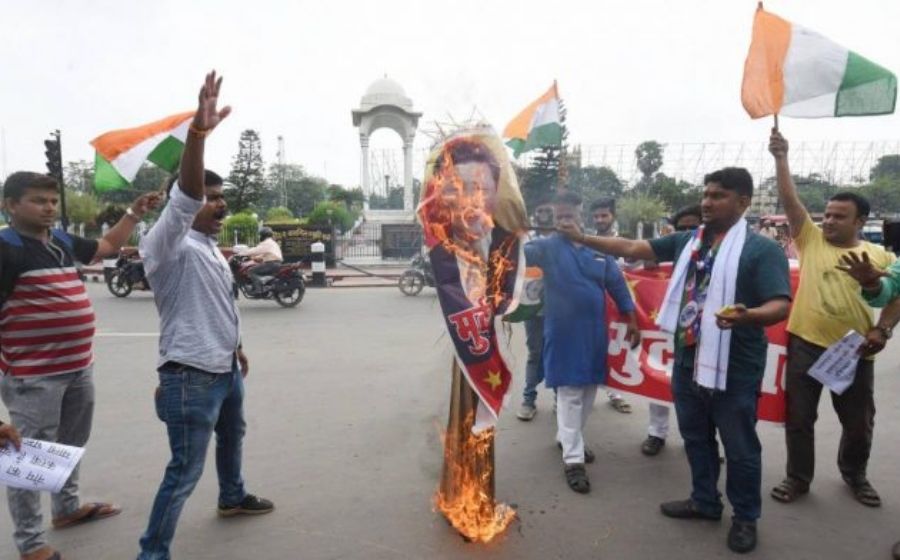
China Wrap: How Centre acted on Galwan

A day after the Army announced that 20 soldiers had been killed in the clash between India and China at the Galwan valley in Ladakh, Prime Minister Narendra Modi on Wednesday (June 17) said India wanted peace, but was equally capable of giving a “befitting reply if instigated.”
“I would like to assure the nation that the sacrifice of our jawans will not be in vain. For us, the unity and sovereignty of the country is the most important. India wants peace but it is capable to give a befitting reply if instigated,” Modi said, after convening an all-party meeting at 5 pm on June 19 to discuss the border issue.
In a couple of tweets, Defence Minister Rajnath Singh said the death of soldiers was painful and the nation would never forget the bravery and sacrifice of the soldiers.
However, Congress leader Rahul Gandhi questioned Rajnath why it took him two days to condole the deaths of the soldiers. He also said it was an insult to Indian Army that Rajnath had not named China in his tweet. “…3. Why address rallies as soldiers were being martyred? 4. Why hide and get the Army blamed by the crony media? 5. Why make paid-media blame Army instead of GOI?” he asked.
Why is the PM silent?
Why is he hiding?Enough is enough. We need to know what has happened.
How dare China kill our soldiers?
How dare they take our land?— Rahul Gandhi (@RahulGandhi) June 17, 2020
Congress president Sonia Gandhi asked Modi to reveal the truth about the situation in the valley and tell the nation “how the Chinese occupied Indian territory”. Asking the PM to disclose the reason behind the fight, Sonia, in a video address, sought the details of the number of soldiers who had been injured and gone missing.
Two days after the clash, the Army had begun reviewing the norms of engagement with China that refrained Indian troops from opening fire, NDTV has quoted sources as saying.
Also, External Affairs Minister S Jaishankar had a telephonic conversation with Chinese Foreign Minister Wang Yi. The leaders agreed to ‘cool down tensions on the ground as soon as possible’ and maintain peace and tranquility near the Line of Actual Control (LoAC) as per the June 6 disengagement understanding between the two countries.
“The external affairs minister underlined that this unprecedented development will have a serious impact on the bilateral relationship. The need of the hour was for the Chinese side to reassess its actions and take corrective steps,” the Ministry of External Affairs said in a statement.
Bihar: Wreath laying ceremony of Hawaldar Sunil Kumar who lost his life in #GalwanValley clash, being performed at the Patna Airport. Bihar Deputy Chief Minister Sushil Modi, State BJP President Sanjay Jaiswal and RJD leader Tejashwi Yadav are also present at the ceremony. pic.twitter.com/mvS1McmCP2
— ANI (@ANI) June 17, 2020
Meanwhile, people set fire to Chinese flags and photos of the country’s President Xi Jinping in Ahmedabad, Vadodara and Surat in Gujarat. Protesters urged the Modi government to ensure that martyrdom of the soldiers in the Galwan Valley did not go in vain.
On June 15, 20 Indian soldiers, including a Colonel, were killed in a face-off with Chinese troops that erupted when the Indian forces tried to remove a Chinese tent. Reports said Chinese authorities had already given their approval for the removal of the tent. Both sides had used hand-to-hand combat, besides wooden sticks and iron rods.
With the fight happening in sub-zero temperatures, many had fallen into the Galwan River. Earlier, only deaths of three personnel — a Colonel and two soldiers — were reported. But the Army on June 16 night announced that 17 others had been succumbed to injuries due to the face-off.
The clash in Galwan Valley on Monday night is the biggest confrontation between the two militaries after clashes in Nathu La in 1967, when India lost around 80 soldiers while over 300 Chinese army personnel were killed.
(With agency inputs)


